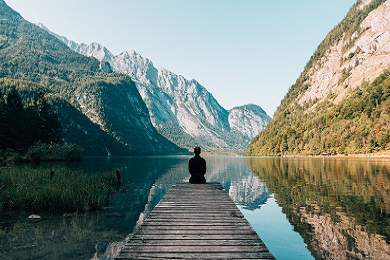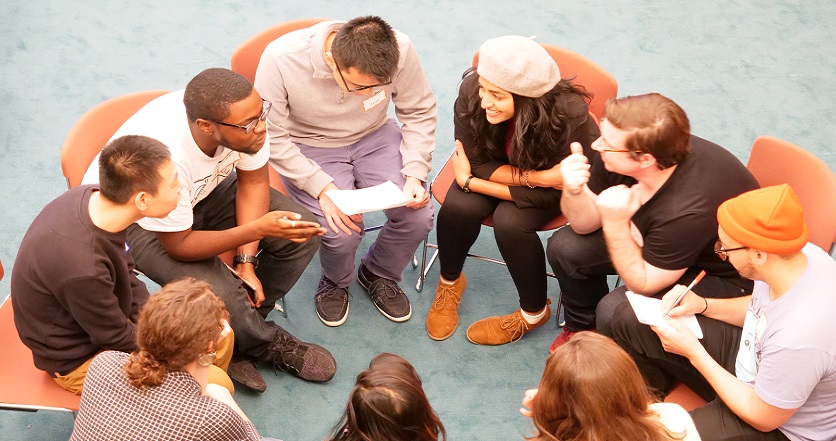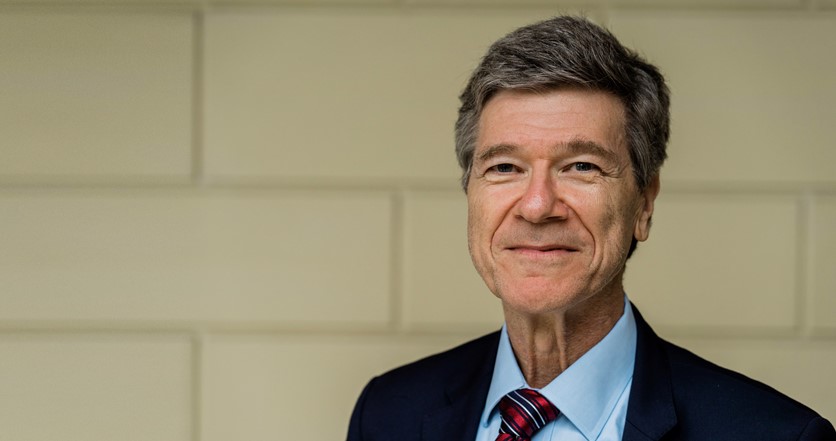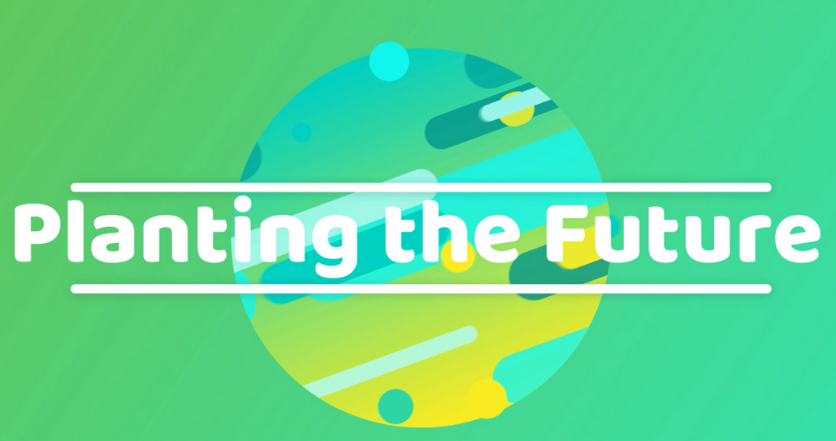A Buddhist Response to the Climate Crisis

The following is taken from a longer talk by SGI-UK General Director Robert Harrap for a webinar, titled “Bodhisattvas for the Earth—The Buddhist Response to the Climate Crisis,” organized by SGI-UK in the lead-up to the COP26 climate change conference in Glasgow, UK, in November 2021.
Buddhism has always looked at the interconnectedness of all things, and the Buddha taught that there would be problems if we do not care for the environment. Respect for the environment is a principle that goes back to the beginning of Buddhism.
The founder of the Soka Gakkai, an educator called Tsunesaburo Makiguchi, wrote a book published in 1903 called The Geography of Human Life, which described an ethical and spiritual relationship between humanity and our environment.
President Daisaku Ikeda has been contributing articles, papers and proposals on this issue for decades, and his writings have been a huge influence in this talk.
Finally, the SGI (Soka Gakkai International) has been actively raising awareness of these issues in different ways, but particularly through exhibitions such as “Seeds of Hope,” which has been shown around the world.
Interconnectedness—The Metaphor of Indra’s Net
Soon after attaining enlightenment, the Buddha explained how all phenomena are connected in a great and complex web of overlapping and mutually interacting elements. This connection is explained in different ways. One of them is the metaphor of Indra’s net.

In Buddhist teachings, the metaphor of Indra’s net describes an enormous net suspended above the palace of the god Indra where at every knot there is tied a brightly colored jewel. The net shimmers with the brilliant colors of the jewels. Each jewel contains and reflects the image of all the other jewels in the net, which sparkles in the magnificence of its totality. When a single cord is pulled, each and every jewel throughout the net sparkles beautifully. No part of the net is unaffected. This metaphor tells us that in life we are all connected and that our relationship with the environment is also intimately close.
Buddhism sees the relationships of all things in the universe not as a still, static image, but as the dynamic pulsing of creative life. This metaphor is also used to explain that one person can positively affect the whole web of interconnected life and how one person can effect a change on a variety of levels in society, across humanity and in nature.
The Oneness of Life and Its Environment
Our relationship with the environment is often explained through the principle of the oneness of self (or life) and the environment (Jpn. esho funi). Nichiren Daishonin, the founder of Nichiren Buddhism, wrote: “Environment is like the shadow, and life, the body. Without the body, no shadow can exist, and without life, no environment. In the same way, life is shaped by its environment.”
We should be clear that this is not suggesting a hierarchy—that the body is superior and the shadow inferior. The point this simile is making is that when the body moves, the shadow immediately responds.
From a basic perspective, the environment and I are two things. But the Buddhist view is that on a deeper level there is oneness. Buddhism suggests that it is more than simply a mutually beneficial relationship, and that both of these two apparently different things have the same source.
The “e” of esho stands for eho or the environment, which means the place where I find myself. The “Sho” of esho stands for shoho, independent life entity or self. Funi is short for a longer phrase that translates as “two but not two.” This expression therefore means that self and the environment appear to be two, but they are actually so profoundly connected that there is a oneness.
A principle called “three thousand realms in a single moment of life” tells us that both the individual and the environment are inherent in a single moment, so each contains the other, and at the same time each pervades the other.
In fact, the Buddhist view is that both the self and the environment arise out of what it calls the universal law, or cosmic life force. While they appear to be two separate phenomena, they are one in essence because they both emerge out of the same core universal life.

To put these complicated ideas more simply, we are taught that the environment mirrors what is going on in our lives and that our lives are deeply affected by what happens in the environment. The positive message from this principle of esho funi is that it shows us that people can influence and reform their environment through an inner change, or by elevating their inner life condition.
A Buddhist sutra says: “If the minds of living beings are impure, their land is also impure, but if their minds are pure, so is their land. There are not two lands, pure or impure in themselves. The difference lies solely in the good or evil of our minds.”
To explain the question of whether our minds are good or evil, and if they are evil, what we can do about it, Nichiren Buddhism emphasizes the importance of the life state of the individual, and, collectively, the life state of a society. This is explained in a principle called the “Ten Worlds,” which explains that each of us is capable of responding to what is going on in life through one of ten different psychological responses, or life states.
While we are capable of negative and destructive actions when motivated by greed, anger and foolishness, with the practice of Nichiren Buddhism, we can also raise our life state and reveal the compassionate and altruistic state of the bodhisattva and the dynamically positive state of the Buddha.
The Dignity of Life
In Daisaku Ikeda’s published dialogue with Hazel Henderson, Planetary Citizenship, he remarks:
“Buddhism locates a vast cosmos deep within human life. This cosmos contains a boundless treasure or goodness, reverently called the ‘Buddha nature.’ This radiant nature is inherent in all living things. Each inner cosmos is one with the evolving greater external universe. In Buddhist terms, the great universe and the self—the great macrocosm and the microcosm—are one.
“Since the self and all phenomena are one, all things are interrelated. Termed dependent origination, this teaching explains that all things weave a single whole in which individuals live in relation to all others.
“In other words, all beings and phenomena exist or occur because of their relationship with other beings and phenomena, and nothing in either the human or the nonhuman world exists in isolation. All things are mutually related to and interdependent with all other things. They all form a great cosmos maintaining the rhythms of life.”
This is echoed in Ikeda’s The New Human Revolution:
“Buddhism does not regard human beings as masters of the Earth destined to conquer and subjugate Nature and all other life. Instead, it views the universe as a single living entity, of which humans are only a small part—a microcosm within the macrocosm, so to speak. Buddhism perceives human beings and all other life, as well as the environment and phenomena surrounding them, as linked in a web of mutually interdependent and harmonious relationships, all of which serve to support and maintain life.”
We must adopt the standpoint that the awareness of the dignity of life must be the basic principle on which all our actions rest.
Global Prayer, Inner Transformation and Dialogue
In 2020, SGI-UK members studied Nichiren’s seminal treatise “On Establishing the Correct Teaching for the Peace of the Land” (Jpn. Rissho Ankoku Ron). This text, written in 1260 Japan as a dialogue, explains how the underlying philosophy of the government had failed to protect the ordinary people. By replacing that failed way of governing with one based on the dignity of life, Nichiren explains, the people will become happier and the land will become safer. We can see in this writing a three-stage process that Nichiren wishes us to absorb and apply.
Having explained the misery of the people who have experienced pestilence, extreme weather events, earthquakes and the threat of invasion, Nichiren talks about a remedy which has three stages: prayer, inner transformation and the power of dialogue to have a positive influence on others. This text shows us through a dialogue how someone concerned about the state of the world is persuaded to find the depths of their own inner potential and to then encourage others in turn.
Nichiren starts the process of transformation by explaining how important it is to have a broad—even a global—focus: “If you care anything about your personal security, you should first of all pray for order and tranquility throughout the four quarters of the land, should you not?”
Rather than just focusing on ourselves, our families or our own local area, we should stretch our awareness and pray for the four quarters—the whole world. About the process of inner transformation, he explains what is necessary to do and then describes the impact on the world around us: “Therefore, you must quickly reform the tenets that you hold in your heart . . . If you do so, then the threefold world will become the Buddha land, and how could a Buddha land ever decline?”
Human Revolution
“Reforming the tenets that we hold in our hearts” describes the process of inner transformation which is referred to as human revolution within the Soka Gakkai. President Ikeda has said of this process:
“A great human revolution in just a single individual will help achieve a change in the destiny of a nation and, further, will enable a change in the destiny of all humankind.”
How do we do this human revolution? In Choose Life, the dialogue with the British historian Arnold Toynbee, Ikeda said that one must devise a way of tapping the power that lies deeper than consciousness. The deep meaning of human revolution is for us to access the reservoir of the Buddha nature and reveal the qualities of the Buddha through our actions in our daily lives. In the Nichiren Buddhist tradition, the way to do this is to chant the phrase Nam-myoho-renge-kyo which Nichiren taught is the key to summon and manifest the positive power that is at the deepest level of life. When we chant this phrase with a determination to see a transformation in the world around us, we draw out the qualities of the Buddha so they imbue our actions in our daily lives.
What Can We Do?

As individuals, we can follow the suggestion to “Think globally and act locally.” We can be careful with our consumption, source our food and consumables carefully, responsibly and sustainably. We can waste less, reduce, reuse and recycle. We can follow the ten actions for individuals recommended by the United Nations on their “act now” website—and if we are already doing them then we can be confident we are making a difference—but let’s let our families and friends know about them as well. They include things like recycling and reusing, but also spending shorter time in the shower, unplugging electrical devices and thinking about where we source our clothes.
It’s also very valuable to get reassuring perspectives from President Ikeda’s peace proposals. They are aimed at the UN, but they also suggest things each of us can do about the important issues of the day. They are also incredibly hope-filled, positive and inspiring documents.
As individuals we have a voice. We can lobby politicians, both local and national, and encourage positive policies and challenge unreasonable ones. We can support the development of transition towns and other local initiatives. And there are many other things as well.
In his 2015 peace proposal, in a section on the rehumanization of politics and economics, President Ikeda talks about the power of people when we act together in solidarity. He refers to his friendship with the peace scholar, the late Elise Boulding, and her belief that it is important to devote all-out effort to developing each member of the community. We may worry though that not enough people seem to care. In this very reassuring statement, he then says that Elise Boulding:
“. . . maintained that the future direction of society is in fact determined by the 5 percent who are active and committed. This 5 percent ultimately transforms the culture in its entirety. I draw great hope from her confidence.”
We only need 5 percent to be active and committed to transform our future direction. We may need to go out and find others who share our concerns and our determination to take wise and compassionate action.
There is a lot of work to be done, so it is for each of us to think what we can do as an individual, as part of our civil society groups and together with likeminded individuals and groups.
Let’s deepen the confidence that an understanding of these Buddhist principles gives us. We can cause a change, and we can make a positive difference.
Access the full webinar here







